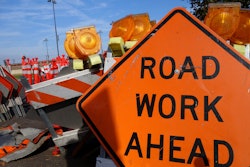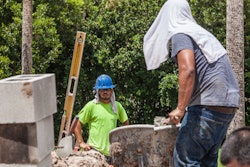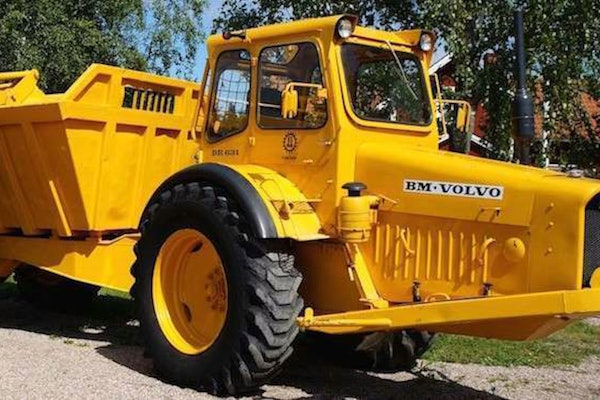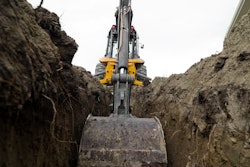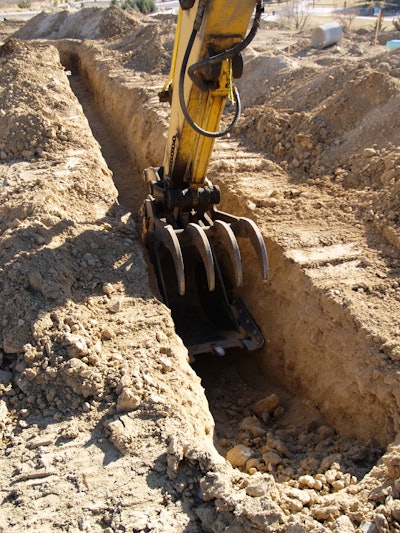
Manslaughter charges against five employees on a Washington wind farm jobsite where a worker died in a trench collapse have been dismissed.
The charges were filed August 9, 2021, in Lewis County Superior Court following a cave-in January 9, 2020, that killed 24-year-old William Franklin Stringer. Stringer was a temporary employee at the Skookumchuck Wind Energy Project. He had jumped into the 14- to 15-foot-deep trench to rescue another worker.
The jobsite’s foreman, site supervisor and site manager were charged with second-degree manslaughter, while two workers who were buried in the trench and survived were charged with first-degree manslaughter.
All five charges have been dismissed by a judge. The most recent dismissal came April 19 for Kenneth Phillip DeShazer, 52, of California, who was charged with first-degree manslaughter. The judge ruled there was not enough evidence to prove DeShazer caused Stringer’s death, according to The Chronicle website based in Centralia, Washington.
DeShazer was the first to be buried in the trench.
The other defendants’ charges were dismissed January 19 by the judge. They are as follows:
- Excavator operator Paul Steele Csizsmar, 25, Brantingham, New York, who had also been charged with first-degree manslaughter and was buried in the trench while trying to rescue DeShazer.
- Site foreman Matthew P. Buckles, 43, Edmond, Oklahoma, second-degree manslaughter.
- Site manager Kurt D. Schwarting, 32, West Lowville, New York, second-degree manslaughter.
- Site supervisor Joel Thome, 46, Bakersfield, California, second-degree manslaughter.
Two of the defendants were also buried
The probable cause affidavits described the incident as follows:
On January 9, 2020, Paul Csizsmar, Kenneth DeShazer and Jonathan Stringer were digging a trench to install conduit under a culvert. Joel Thume, site supervisor, outlined the day’s work at a morning meeting. Matthew Buckles was the site foreman. Kurt Schwarting was the site manager.
Csizsmar was operating an excavator. The trench depth varied from 14 to 15 feet deep.
Before this day, the conduit was being installed with a bore machine. The decision was made to stop using it because of poor weather. This would be the first trench dug at this point on the job for installing conduit.
The conduit got jammed, and DeShazer entered the trench to set up rigging to allow them to pull the conduit under the culvert using the excavator.
Due to poor weather and soil conditions, the trench walls collapsed onto DeShazer, burying him in about one and a half feet of dirt.
Csizsmar and Stringer then jumped in the trench to free DeShazer. That led to a secondary collapse that buried all three men in various depths of soil. Csizsmar freed himself and called for help. DeShazer was able to stay alive by a pocket of air and was rescued. He was flown to a hospital with serious injuries.
Stringer’s body was recovered the next day. He died of asphyxiation due to chest compression by the weight of the soil on top of him.
“At one point, nine or more people took turns entering the still unprotected trench to dig out the buried workers,” the Washington State Department of Labor & Industries said in its July 16, 2020, news release about the incident.
Fines against employer, $12 million settlement
The general contractor on the project was RES America Construction, according to the Department of Labor & Industries.
Stringer had been employed for a few months by Aerotek, a temporary agency hired by subcontractor RES System 3.
The agency said in a news release that the soil was unstable from heavy rains and that no trench box or other protections were in place.
The agency proposed the following fines in July 2020 for the incident:
- $360,874 for RES System 3 for the following alleged violations: no cave-in protection, no competent person trained on trench safety on site, no written safety program tailored to the project, inadequate training, improper ladder extension, and no means of getting out of the trench.
- $184,800 for RES America Construction for the following alleged violations: not ensuring the subcontractor used cave-in protection, not having a written safety program tailored to the project, inadequate training programs and improper ladder extension.
On February 26, 2021, Stringer’s estate settled for $12 million with RES and affiliates after filing a wrongful-death lawsuit. It is one of the largest wrongful-death settlements for an individual in Washington State history.




